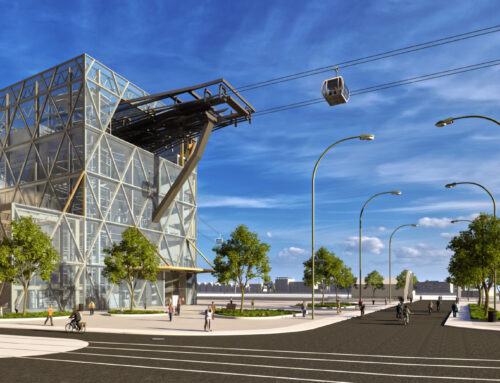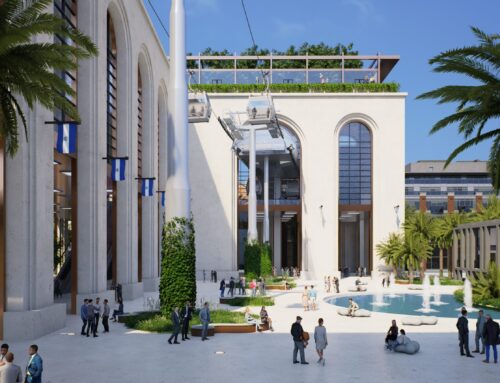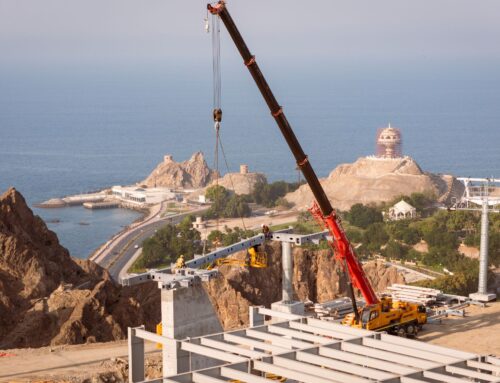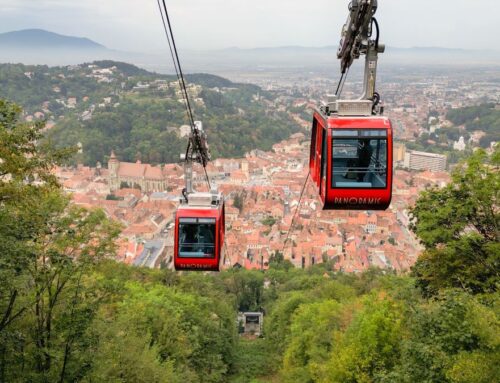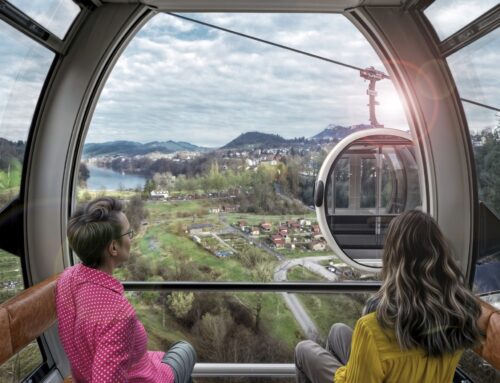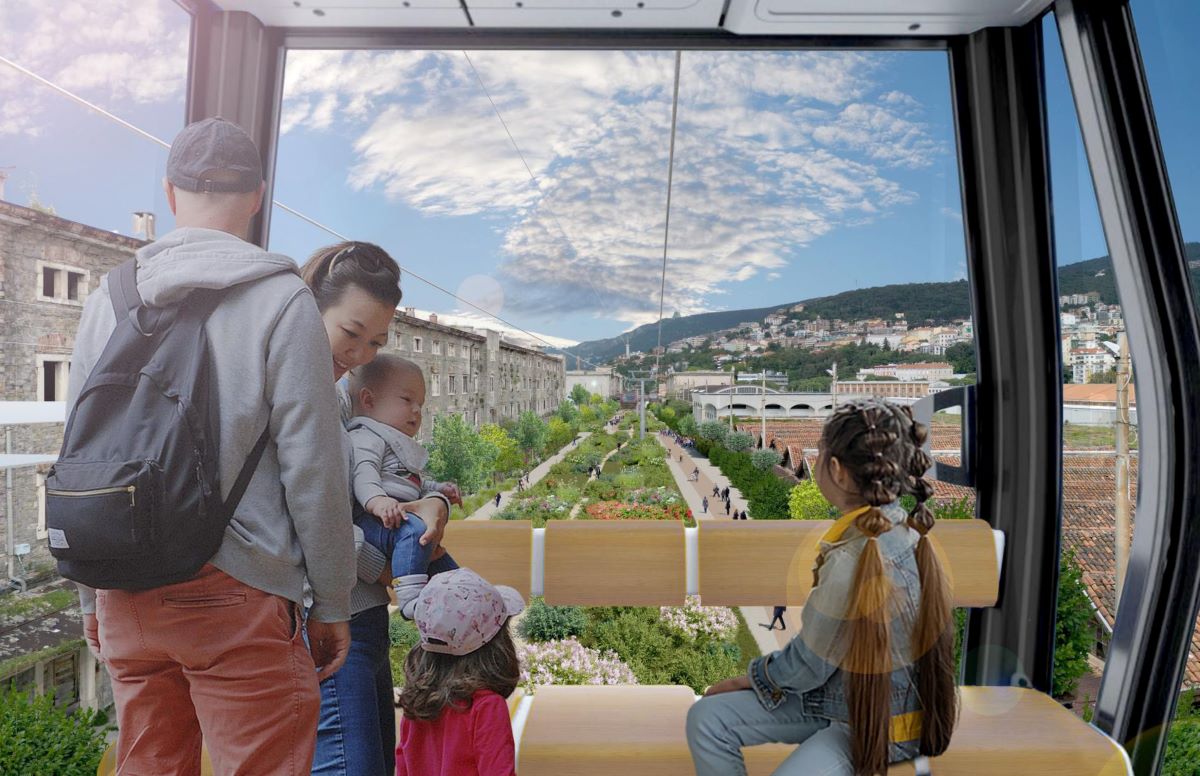
Cities, Tourism
Trieste: Construction of the cable car to begin this year?
The Italian port city of Trieste suffers from congested roads due to its hilly hinterland, while its old port awaits revitalization. An urban cable car could address both issues.
According to current plans, a 10-passenger monocable gondola lift is to connect the hillside suburb of Opicina with the coastal district of Barcola-Bovedo. There, the line makes a 90-degree turn and runs along the coast to the Porto Vecchio station. Nearby are a conference center, museums, and a cruise terminal. From there, the cable car will travel along the wide road between the old port warehouses, ending at Pier IV in the center of Trieste.
The selected 4.15-kilometer route thus offers a continuous connection between Opicina and the city center, with two intermediate stations along the Mediterranean coast. Additionally, it serves as a revitalizing axis for the emerging port district.
The route
It leads from the mountain to the sea with four stations, one is a corner station.
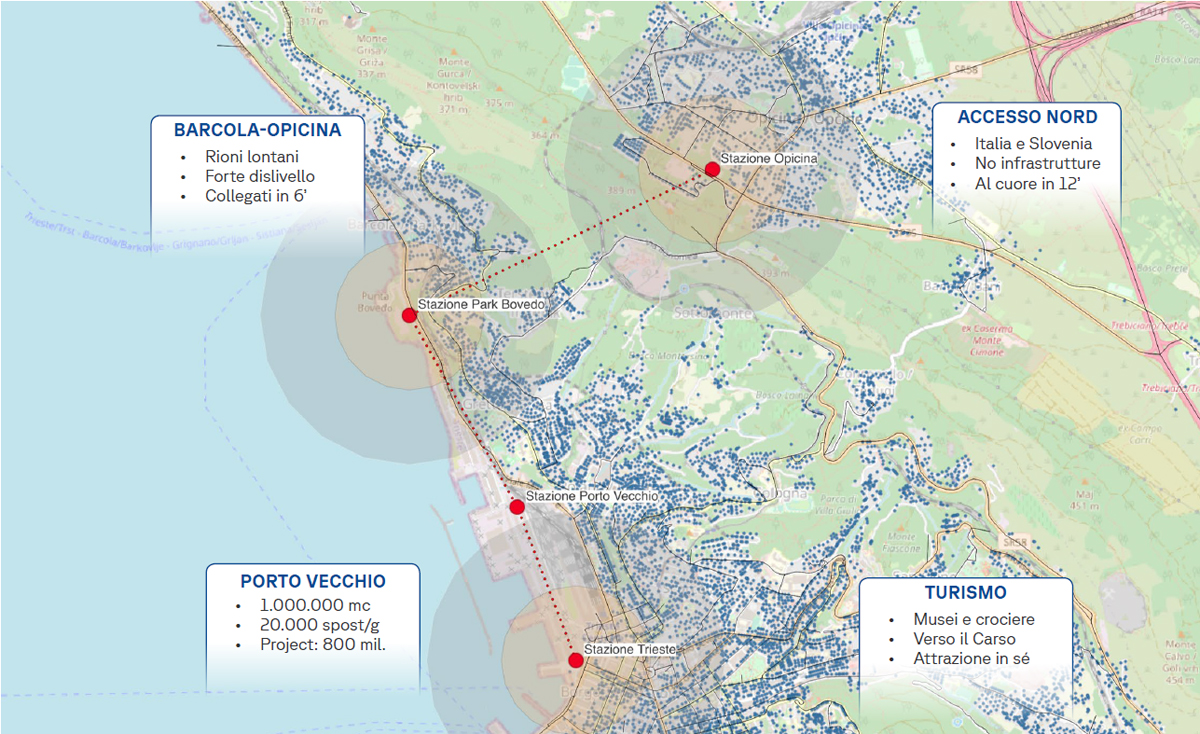
Cable car to relieve northern traffic
Giulio Bernetti outlined four main goals for the cable car in his presentation at INTERALPIN. The first is to connect the city center to the hilly northern areas by public transport:
“Currently, many people commute to Trieste via inadequate roads and overcrowded rail lines. Coming from Slovenia or via the Italian highways, they will be able to park in Opicina and reach the city center in twelve minutes by cable car,” said Bernetti.
A two-story parking garage with 400 spaces and bus stops will be built at the Opicina station. This infrastructure is included in the already fully funded €62 million investment.
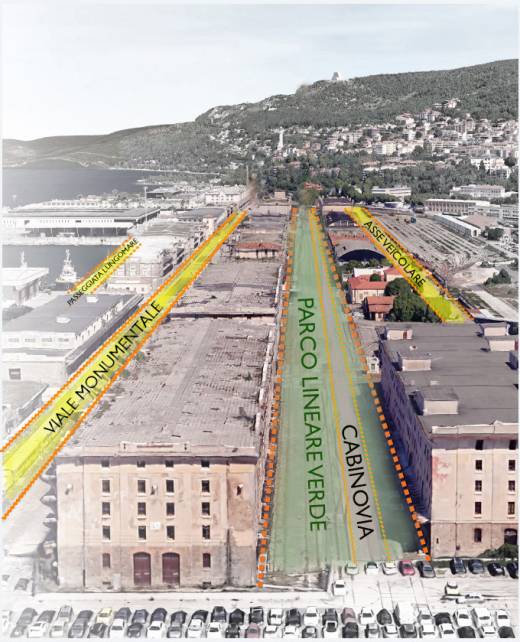
The cable car runs through the third corridor of the port area.
Cable car for peripheral neighborhoods
The third goal is better connection between the neighborhoods of Barcola and Opicina. Until now, they’ve been poorly connected to each other and to the city center. “The cable car will link both locations in just six minutes,” Bernetti said.
Cable car as a tourist attraction
The fourth goal is to market the cable car as a tourist attraction. “The cabins will offer scenic views, allow bikes onboard, and connect the city center to nearby mountains and park & ride facilities,” Bernetti added.
Cable car and its environment
An in-depth analysis of the origindestination matrix, route planning, and modal shift projected a capacity of 5,000 passengers and 10,000 trips per day – taking into account the future development of Trieste and its old port area.
“The environmental impact of the cable car will be minimal. The northern nature reserve will only be touched at its edge, and the CO₂ footprint will be relatively low,” emphasized Bernetti. Furthermore, the interventions will be offset by new green areas, conservation zones, and tree planting.
Heritage conservation in the old port will also be respected, with the cable car closely integrated into district planning. “The port consists of four corridors – the waterfront by the sea, the Culture Line in the second row, the Nature Line with the cable car and green spaces in corridor three, and the already implemented Open City Line completing the area,” explained Bernetti.
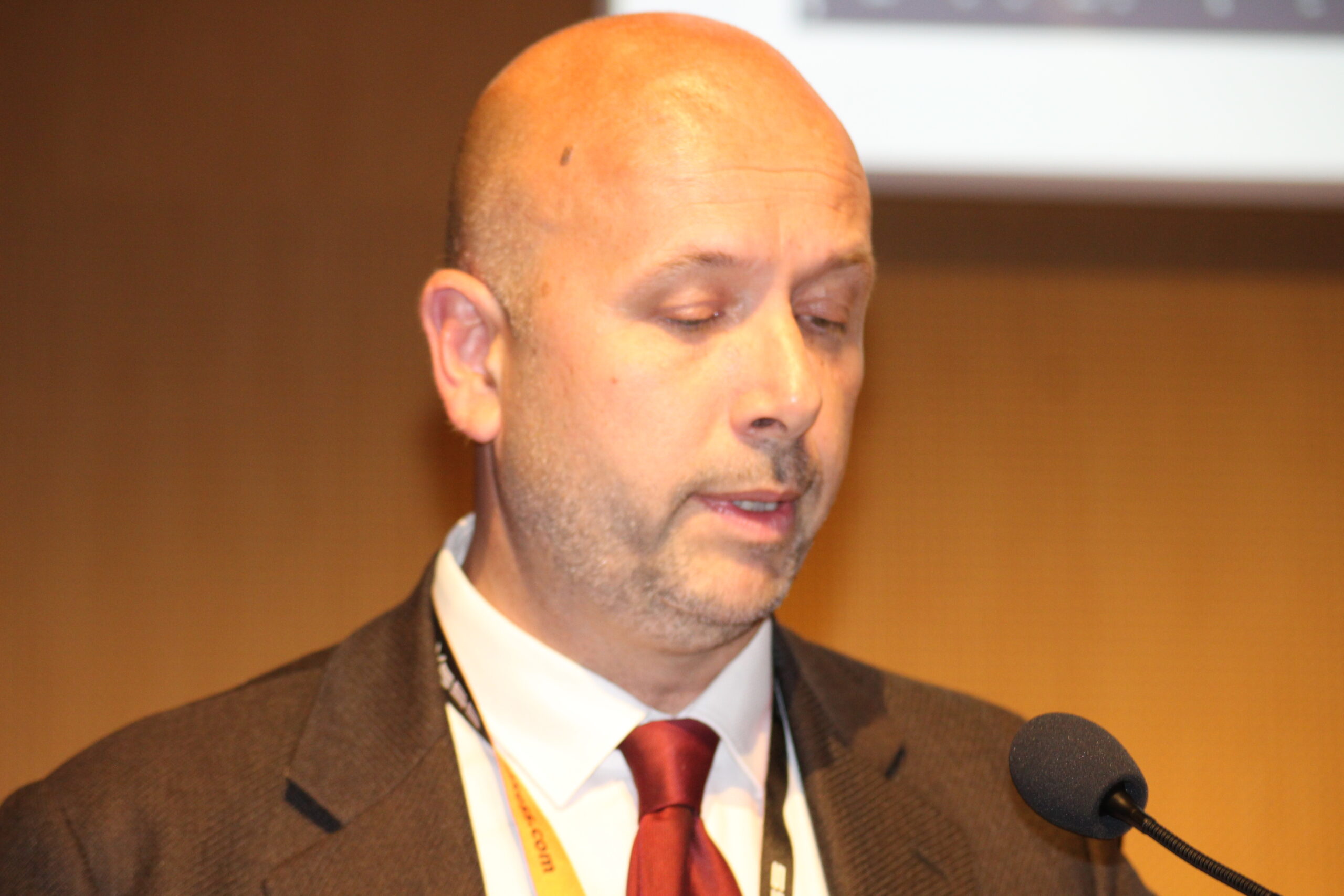
Giulio Bernetti
Director of the Department of Urban Planning, Environment, Public Works, and Cultural Heritage of the City of Trieste
“We have solid data and studies. Nevertheless, there are objections to the cable car, particularly regarding traffic demand, environmental impact, and the protection of cultural heritage. These objections come from opposition parties, environmental organizations, and a citizens’ association. One communication challenge is that public administration cannot keep up with social media, where misinformation is circulating. Despite this, I am confident that we can begin construction by the end of 2025.“
Cable car and politics
The cable car is included in all major planning documents for Trieste, including the Sustainable Urban Mobility Plan (SUMP), the Sustainable Energy and Climate Action Plan, the Master Plan for the Old Port, the Old Port Guidelines, and the city’s overall Master Plan. All of these went through public consultation phases, as required by law. These included public information events, topicspecific workshops, and hearings involving numerous stakeholder groups.
“Involving the public takes a lot of time, carries the risk of lacking political responsibility, and often meets with low public interest, as people generally don’t find planning processes exciting,” said Bernetti.
Additionally, it raises the question of who actually participates – often it’s so-called NIMBYs (“Not in my backyard”), people who oppose changes in their immediate surroundings. Expert opinions are frequently disregarded or given little attention.
Cable car & current status
The planning phase for Trieste’s cable car is complete. A local urban planning variation still needs city council approval. The final project design is ready and can now be reviewed by a conference of all involved authorities, Bernetti concluded: “Construction could begin by the end of the year.”
Cable car Trieste
| Section 1: Opicina – Bovedo | |
| Length | 2,260 m |
| Towers | 19 |
| Section 2: Bovedo – Pier IV | |
| Length | 2.548 m |
| Towers | 18 |
| Total capacity | 1,800 – 2,400 P/h |
| Headway | 20 sec |
| Total length | 4.808 m |
| Total towers | 37 |
| Cabin capacity | 10 P |
| Cabins | 80 – 100 |
| Total investment | € 62 million |


